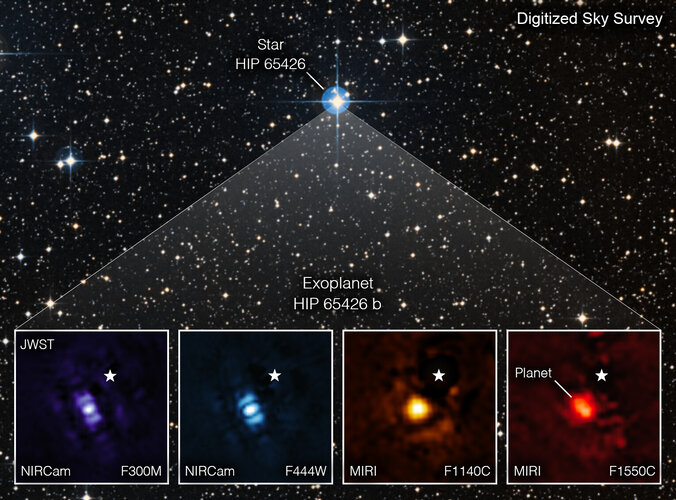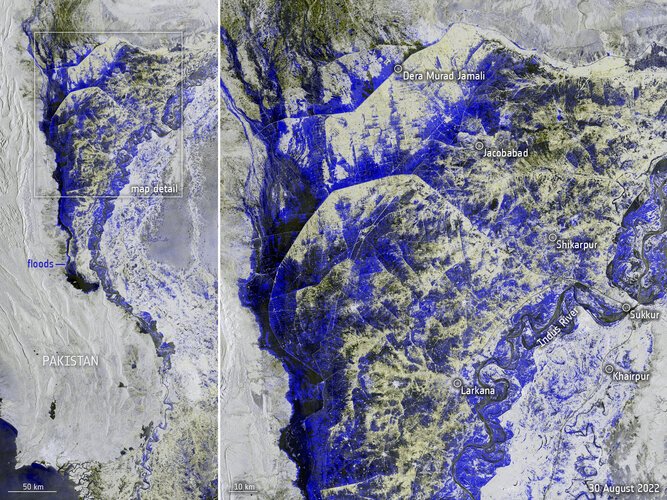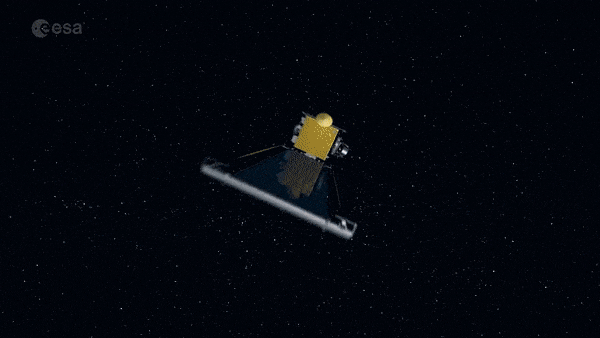
Copernical Team
SpaceX wins another $1.4 billion from NASA to fly missions to ISS
 NASA has awarded five new missions to private exploration company SpaceX in a deal worth $1.4 billion that will transport astronauts and cargo to the International Space Station over the next eight years.
The contracts were awarded as part of NASA's Commercial Crew Transportation Capability contract (CCtCap), an initiative that opens the door for business with the private sector, the sp
NASA has awarded five new missions to private exploration company SpaceX in a deal worth $1.4 billion that will transport astronauts and cargo to the International Space Station over the next eight years.
The contracts were awarded as part of NASA's Commercial Crew Transportation Capability contract (CCtCap), an initiative that opens the door for business with the private sector, the sp Game on at Gamescom

More than 265 000 visitors headed to Cologne in Germany for Gamescom last week – the world’s largest computer and video games fair. As well as the latest games releases, they got a chance to discover that ESA and the gaming world have a lot in common.
System study of proposed inflatable moon base

A vision of a future moon settlement is assembled from semi-buried inflatable habitats. Sited beside the lunar poles in regions of near-perpetual solar illumination, mirrors positioned above each habitat would reflect sunlight into greenhouses within the doughnut-shaped habitats.
Inflatable structures specialist Pneumocell in Austria performed a system study of an inflatable lunar habitat, based on prefabricated ultralight structures.
Once inflated, these habitats would be buried under 4–5 m of lunar regolith for radiation and micrometeorite protection. Above each habitat a truss holding a mirror membrane would be erected, designed to rotate to follow the sun through the sky. Sunlight from the mirror would be directed down through an artificial crater, from which another cone-shaped mirror reflects it into the surrounding greenhouse.
The study was supported through the Discovery element of ESA's Basic Activities. It came about after Pneumocell submitted their idea to the Agency's Open Space Innovation Platform, OSIP, seeking out promising ideas for space research from all possible sources.
Explore further
Newest robotic arm on ISS successfully moves payload in space

While the world eagerly awaits the launch of a spacecraft to the Moon, a robot quietly reaches yet another milestone in space. The newest robotic arm outside the International Space Station woke up, stretched and moved a payload effortlessly from one side to the other of the Nauka science module.
The European Robotic Arm (ERA) successfully completed the first transfer following commands from cosmonauts inside the Space Station last week. Teams in Moscow, Russia and at ESA's control room in the Netherlands monitored the moves, where this image was taken by the European team on console on 24 August.
This first motion involved unleashing the payload—a single pin latch and its adapter for the cosmonaut support tool—from Nauka, moving it to the other side of the module and then installing it back to the original position.
This time the payload was just the size of a small suitcase, but ERA's 11 m structure can maneuver up to eight-metric-ton payloads.
The whole operation took around six hours, after which the European Robotic Arm went into hibernation mode.
The test proved what the European Robotic Arm was built for: to move and latch payloads and equipment outside the Russian segment of the Space Station with an accuracy of 5 mm, saving time and work for the crew.
Latest Galileo satellites join operational constellation with enhanced, faster fix

Europe's latest Galileo satellites in space have joined the operational constellation, transmitting navigation signals to three billion users across planet Earth as well as relaying distress calls to rescuers. Their entry into service follows a summer test campaign and will result in a measurable increase in positioning accuracy and improved data delivery performance of the overall Galileo system.
Galileo satellites 27–28 were launched at the end of last year and underwent their in-orbit test review at the end of April, held between ESA, satellite manufacturer OHB and navigation payload maker Surrey Satellite Technology Ltd (SSTL). Their key findings included the fact that both satellites' payloads are performing extremely well—among the best in the entire constellation—and that both satellites entering into service increase the position accuracy and robustness of the overall Galileo system.
NASA, Axiom Space to launch second private astronaut mission to ISS in 2023
 NASA and Axiom Space said Wednesday that they plan to launch a second private astronaut mission to the International Space Station in 2023.
The spaceflight, coordinated by the U.S. space agency and the private Houston-based infrastructure developer, will be designated as Axiom Mission 2, or Ax-2 and will launch from NASA's Kennedy Space Center in Florida in the second quarter of 2023, N
NASA and Axiom Space said Wednesday that they plan to launch a second private astronaut mission to the International Space Station in 2023.
The spaceflight, coordinated by the U.S. space agency and the private Houston-based infrastructure developer, will be designated as Axiom Mission 2, or Ax-2 and will launch from NASA's Kennedy Space Center in Florida in the second quarter of 2023, N Webb takes its first exoplanet image
 Image:
Webb takes its first exoplanet image
Image:
Webb takes its first exoplanet image Pakistan inundated
 Image:
Data captured from space by Copernicus Sentinel-1 on 30 August was used to map the extent of flooding that is currently devastating Pakistan .Heavy monsoon rainfall has led to more than a third of the country now being underwater.
Image:
Data captured from space by Copernicus Sentinel-1 on 30 August was used to map the extent of flooding that is currently devastating Pakistan .Heavy monsoon rainfall has led to more than a third of the country now being underwater. Inflatable Moon base
 Image:
Inflatable Moon base
Image:
Inflatable Moon base After NASA’s asteroid impact, ESA’s Hera comes next

This month NASA’s DART spacecraft will collide with the smaller of the two Didymos asteroids in deep space, attempting to shift its orbit in what will be humankind’s first test of the ‘kinetic impactor’ planetary defence technique. Meanwhile, down on the ground, ESA’s follow-on mission to Didymos has reached its own crucial milestone.
